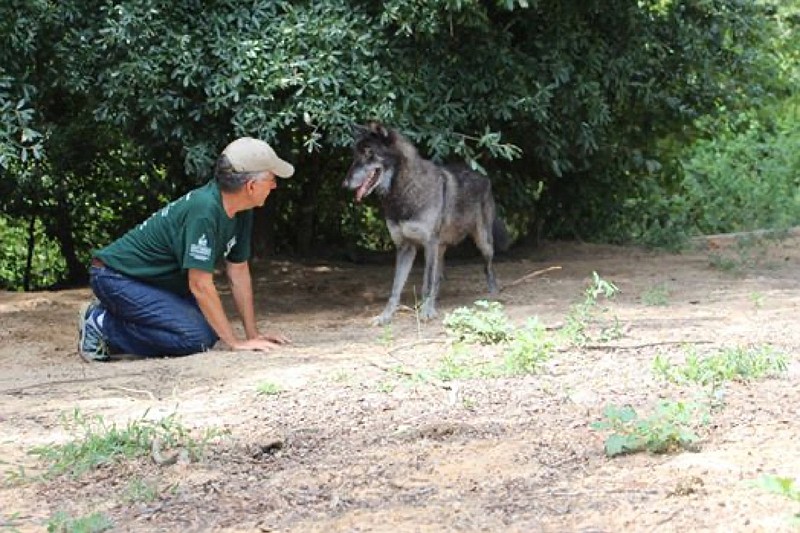The "big bad wolf" really isn't that bad, says Jim Watson, a semi-retired Hamilton County teacher who's on a mission to dispel myths about wolves.
Working in tandem with Educators for Environmental Awareness group, Watson hopes to help continue education for local teachers and get more wolf education into classrooms in the Tennessee Valley, be it through high school biology or middle school literature.
He says that wolves get a bad reputation for being mean, bad and evil, and popular culture tends to promote this trope - when in actuality, the animals are vital to our ecosystem. And they're disappearing.
The red wolf, in particular, the only wolf native to the Southeast, is critically endangered, with fewer than 20 left in the wild.
"There's never been a documented attack on a human by a red wolf," says Watson.
To help instruct teachers on the importance of protecting these animals, Watson helped create a professional development program, open to Hamilton and Walker county educators. It was funded through a grant from Volkswagen, an anonymous donation of $1,000 and money he saved from his part-time recycling business.
To earn a spot, educators submitted a proposal, including lesson plans for how they would incorporate what they learned into their curriculum. Nine teachers were selected, and in February, they participated in trips to Chehaw Park in Albany, Georgia, and the Tallahassee Museum in Tallahassee, Florida, to learn about their respective programs for breeding red wolves. It also included a visit to St. Vincent Island National Wildlife Refuge in Indian Pass, Florida, for a meeting about a growing pack of red wolves; and the Seacrest Wolf Preserve in Chipley, Florida, for a close interaction with gray wolves.
The role of a top predator
Red wolves are the most endangered canid in the world, which makes Watson's program all the more necessary. They have a few marked differences from their gray relatives, including color, size and the length of their fur, ears and legs.
Red wolves are mostly crepuscular, with their activity usually restricted to the hours of dawn, dusk and early evening. As carnivores, red wolves help to keep prey populations in check through their diet of raccoon, white-tail deer and rodents. This decreases the likelihood of overgrazing and the spread of disease (such as chronic wasting disease in deer) caused by prey populations.
"When you have predators involved, nature is in balance," says Watson.
Already, teachers are noting how interested their students are in the material. School teachers from Walker County say they have seen art from their students depicting a changed perception. For example, one forest kindergarten teacher noted a picture drawn by a student, depicting a pack of wolves with a caption saying, "Hey! Stop shooting the red wolves who are almost extinct!"
This May, teacher Rachel Danner from Explorers Homeschool Academy, a learning cooperative that meets at Mile Straight Baptist Church in Soddy-Daisy, took three of her high school biology students to Alaska for 10 days to learn about the gray wolf and its importance in the ecosystem. They explored the Kenai Fjords National Park by boat and participated in a class with a local expert on mammalian skeletal systems, among other activities. The goal, she says, is to teach how the presence or absence of an apex predator can physically change an environment. But beyond that, the hope - for both Watson and now the teachers who participated in his program - is to show how education, too, can change the world.
